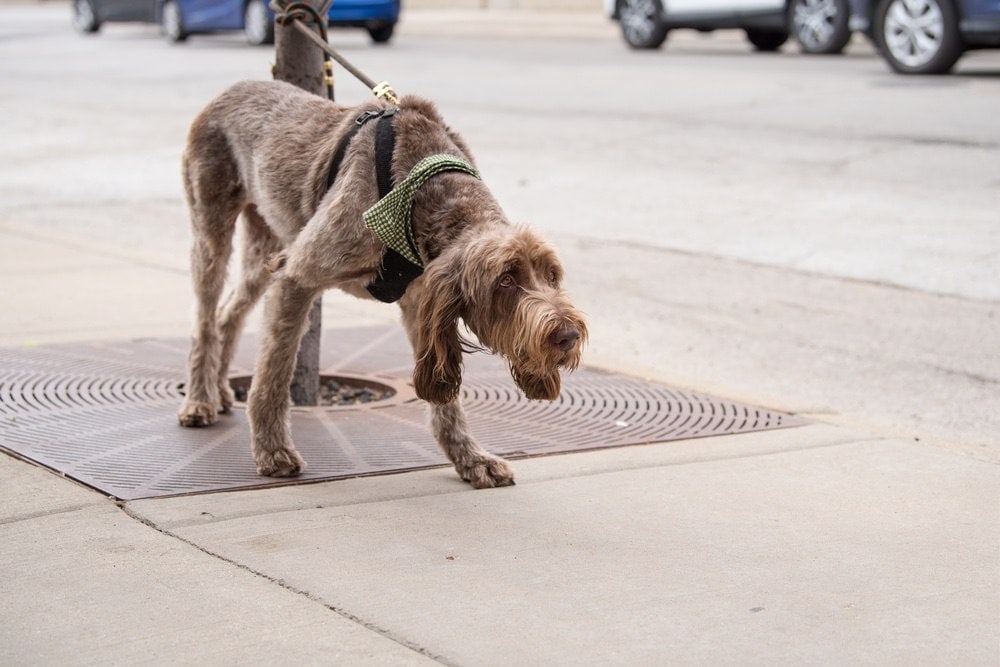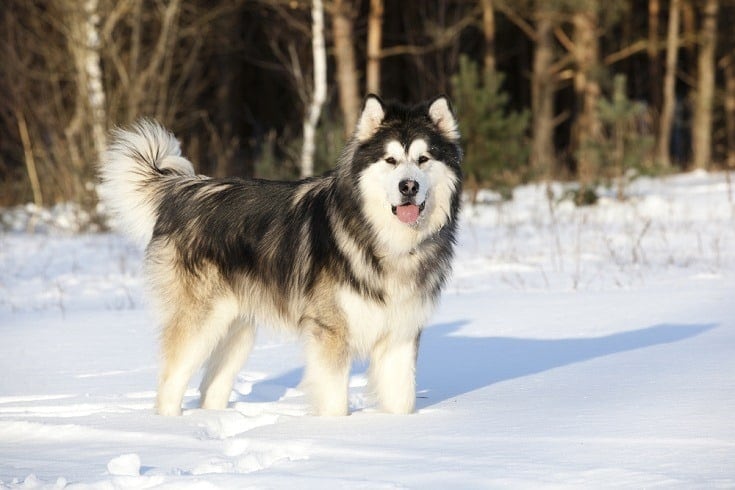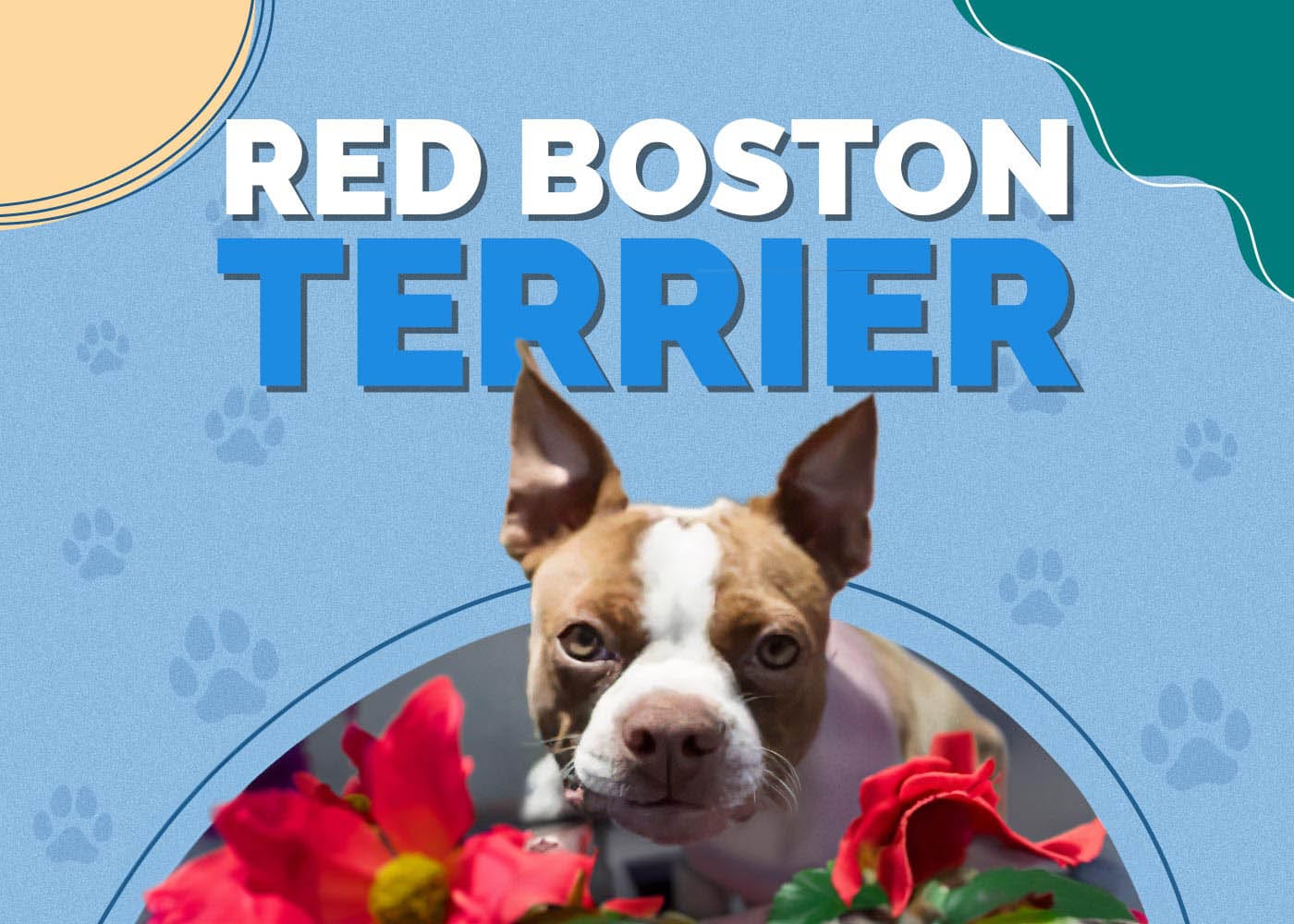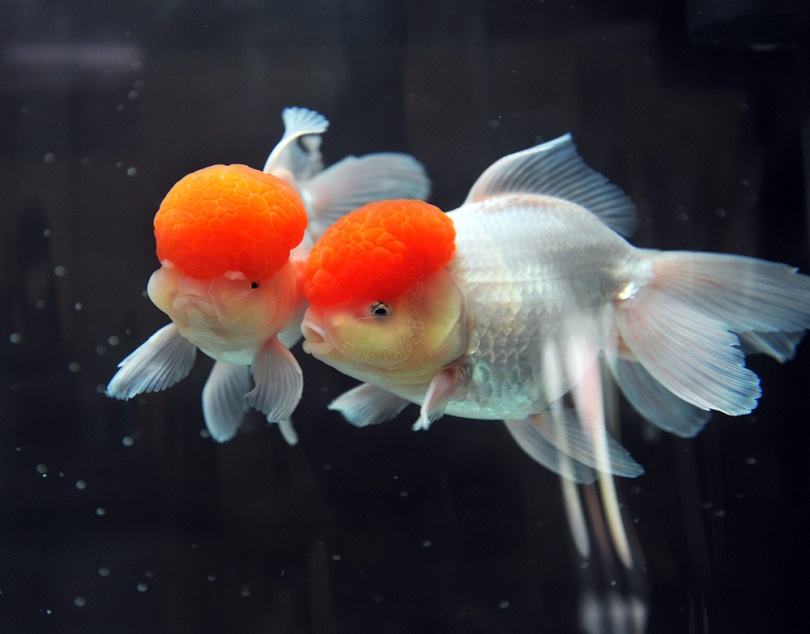Patton Terrier (Boston Terrier & Patterdale Terrier Mix) Info, Pics

Updated on
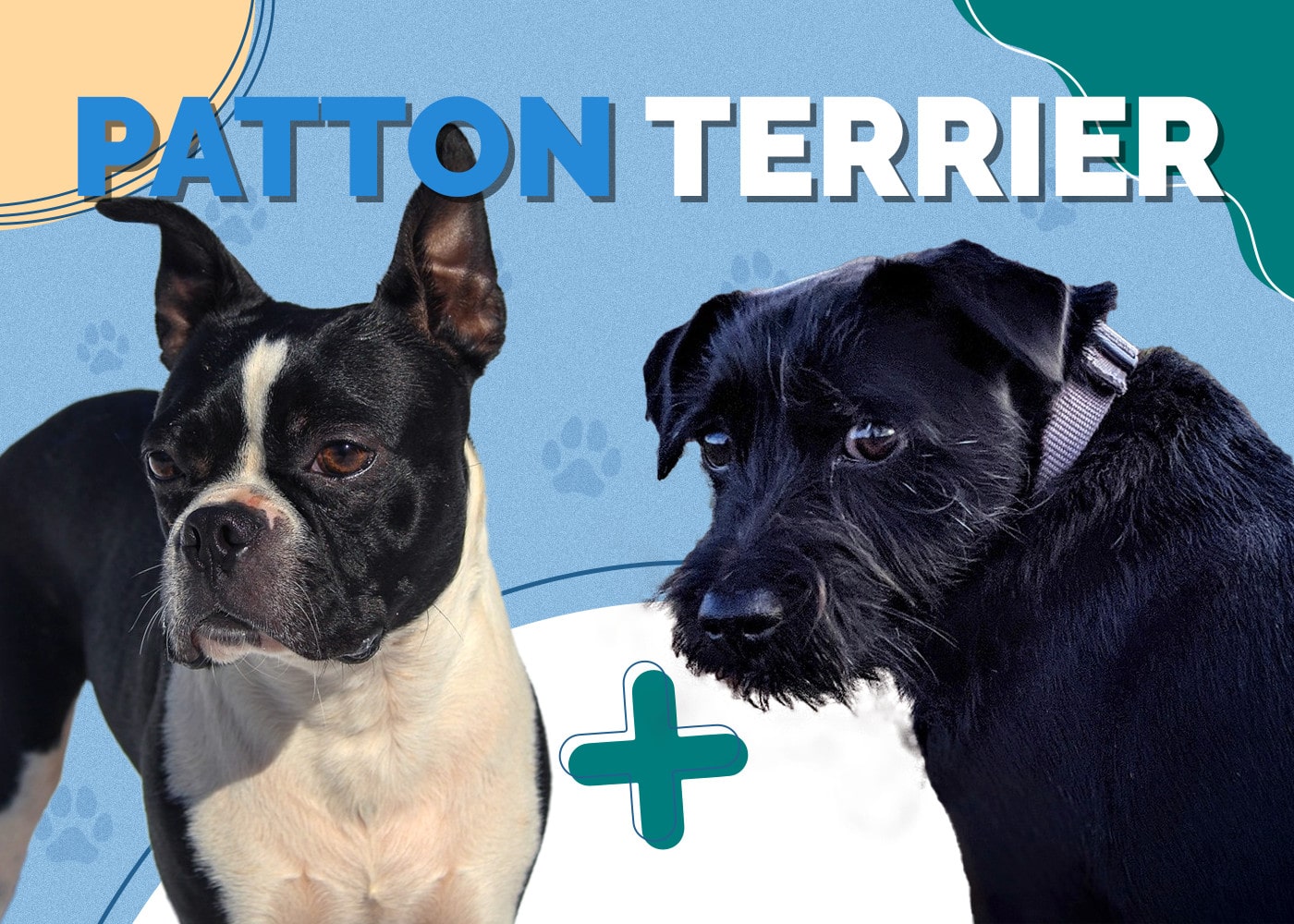
Height:
13–18 inches
Weight:
20–25 pounds
Lifespan:
12–15 years
Colors:
Brindle, black, brown
Suitable for:
Families with kids, singles, watchdog
Temperament:
Energetic, loving, happy
The Patton Terrier is a mixed breed pup. They are a cross between the Boston Terrier and the Patterdale Terrier. Some people think of them as miniature Labrador Retrievers because they are smaller, but their hearts are just as big. They want to love and protect you, which makes them excellent watchdogs.
These little dogs are energetic and happy. They need plenty of personal time with the family and are content to follow you around all day if that is what it takes to spend time with you. They are medium- to high-energy dogs, and they are not well-suited for apartment dwellers who cannot give them adequate exercise.
Patton Terrier Puppies
Patton Terriers are not incredibly common, so you will not likely find one in a shelter. It is always worth it to have a look, however. Not only are dogs less expensive from a shelter, but it also allows you to adopt a dog in need of a home. If you decide to go with a breeder, it is best to look for someone with a good reputation.
Ask if you can see your pup’s parents and their papers. To verify that they treat their dogs well, ask them to look around where they breed and raise them. A quality breeder should be willing to show you around and supply you with any records or information you need. If they are not, it should raise red flags.
3 Little-Known Facts About the Patton Terrier
1. The Patton Terrier Can Be Difficult to Find Because of the Elusiveness of the Patterdale Terrier.
One of the parents of the Patton Terrier is the Patterdale Terrier. They were brought to the United States in 1978. They’re from England and have never gained much popularity outside the country. It makes it challenging to track them down if you do not live in the U.K.
The current belief is that the dogs were initially bred in the small village of Patterdale in the Lake District of Yorkshire. They were bred to be rabbit hunters and excel at hunting foxes and other small prey.
They are typically brown or black with sleek, short fur. Their ears drop from the top of their heads, and their faces are keen and alert. Overall, they look like Labrador puppies.
2. The Boston Terrier Is Known as the American Gentleman.
The Boston Terrier is more popular than the Patterdale Terrier. They are well-known for their short black-and-white coats, which make them look as though they’re wearing a suit. Their dapper personality only helps augment the look.
The Boston Terrier’s name comes from the place where they were bred: Boston, Massachusetts. Many believe that the first Boston Terrier was born during the late 1800s, but that has not been confirmed.
The dog was called the Boston Bull Terrier in the late 1800s, and it was during this time that the American Bull Terrier Club was founded. Then, when the American Kennel Club recognized the breed in 1893, the name was shortened to the Boston Terrier.
Although small with large, erect ears and a docked tail, Boston Terriers were initially bred for fighting. They have courageous personalities that make them ready to take on almost anything. Many owners in the late 1800s and early 1900s used them as ratters. That was before they became the dogs of the upper class and took on a reputation better suited to a gentleman.
Although they are called Boston Terriers, the AKC does not consider them Terriers.
3. These Pups Might Be Small, but They Are Fearless Hunters at Heart.
The Patton Terrier inherits confidence and courage from their parents. With the combination of a fearless hunter and the bravery of a fierce fighter, the Patton Terrier has no qualms.
They will hunt anything, calmly standing up to animals that are twice their size and more. These characteristics make them excellent watchdogs. Even though they do not appear that intimidating, they do their job well with the proper training.

Temperament & Intelligence of the Patton Terrier 🧠
The Patton Terrier can have a range of predominant temperaments. Overall, they are loving, loyal, and brave. However, depending on which parent they favor and each dog’s way of expressing their personality, it can vary more than in some breeds.
They can love to be around people and like to follow you everywhere. They are social animals that prefer to have someone to engage with frequently. On the flip side, they can also be independent. They might express this through stubbornness and being aloof.
The Patton Terrier inherits intelligence from both of their parents. They work hard to determine how to get what they want. They can be quite sensitive to human emotions as well.
Are These Dogs Good for Families? 🏡
Patton Terriers are an excellent choice for families. They have quite a bit of energy and are generally laid back. They enjoy spending time with kids as long as everyone knows how to behave properly around each other.
Even though Patton Terriers are more patient with young children than some other breeds, you should still monitor their interactions. Both the kids and the pup will need guidance on how to treat each other.
Does This Breed Get Along With Other Pets? 🐶 😽
The Patton Terrier is friendly, enjoys spending time with people, and typically does well around other dogs. If you socialize them early, you are almost guaranteed to have a pup that behaves correctly around canines.
Pets other than dogs might present more of a problem. Patton Terriers have a high prey drive and can quickly mistake a pet for prey and wreak havoc.
Things to Know When Owning a Patton Terrier
Food & Diet Requirements 🦴
Patton Terriers are smaller dogs that only need moderate amounts of exercise each day, and their appetite reflects that. You should only feed them 1–2 cups of food daily.
Keep in mind that the Boston Terrier parent is brachycephalic, meaning they have a shorter snout. If your Patton Terrier inherits this physical feature, you need to look for food that is easier for them to eat. Find dry food with a smaller kibble size. This makes it easier for them to get it in their mouth and swallow.
Exercise 🐕
Getting these dogs out for enough exercise is essential to their health. They are medium to high-energy pups. However, they tend to become lethargic if left indoors for long periods. Although these dogs can be stubborn, do not let that become an excuse.
They need plenty of exercise, whether they seem to want it or not. They are usually game for exploring and like to have new places to investigate. You can take them on several daily walks or to the dog park.
On average, they should receive about 45 minutes of activity every day. If you prefer to walk with them, aim for about 7 miles each week.
Training 🦮
Patton Terriers have an ingrained desire to please the people they love. In training sessions, they can be stubborn. However, you can use their need to please and reward them with plenty of positive affirmations during the session. Doing so tells them they are doing a good job and making you happy.
Do not use negative reinforcement with Patton Terriers. They do not respond well, and this training method will only encourage their independence. If they are not responding well to your training, consider obedience classes.
Grooming ✂️
Grooming the Patton Terrier does not require much maintenance. They can have two types of coats, but both are manageable. Their coats can be smooth or broken. A smooth coat is full of coarse fur, forming a dense covering. Broken coats have “guard” hairs that the smooth coat does not. They protect the softer, shorter ones underneath and create a wiry upper layer.
The coat texture and color depend on which parent your pup favors more. Either way, brushing them once or twice a week should be enough to keep the shedding down. You can use a pin or wire brush to get the job done efficiently.
Beyond brushing them, clip their nails every couple of weeks. Check their ears for debris and wipe them out carefully to remove moisture and prevent infections. Brush their teeth daily or at least multiple times each week.
Health and Conditions ❤️
Overall, Patton Terriers are healthy canines. If they favor the appearance of the Boston Terrier, they might struggle with breathing issues. However, with the longer snout of the Patterdale Terrier, they can more effectively avoid those issues.
- Deafness
- Allergies
- Patellar luxation
- Heart murmur
- Cherry eye
- Cataracts
- Conjunctivitis
Male vs. Female
There are no recognizable differences in the physical attributes or personalities between males and females in this breed.
 Final Thoughts
Final Thoughts
The Patton Terrier is fearless, with plenty of tolerance to boot, and is almost more than one could ask for in a family pet. They combine many of the most valued traits in dogs into one adorable package.
If you are looking for a family pet with enough energy to withstand your kids’ activities and have enough love to go around, consider the Patton Terrier.
For dogs that favor the brachycephalic parent, carefully monitor them during strenuous activities, especially as they age. Maintaining regular veterinary appointments will ensure that their health issues can be addressed promptly.
See also:
- Bulldog Dachshund Mix (Bulldach) Dog Breed Info, Pictures & Traits
- Patterdale Shepherd (Patterdale Terrier & German Shepherd Mix) Dog Breed Info
Featured Image Credit: Left: Lopolo, Shutterstock; SteUK, Shutterstock


 Final Thoughts
Final Thoughts